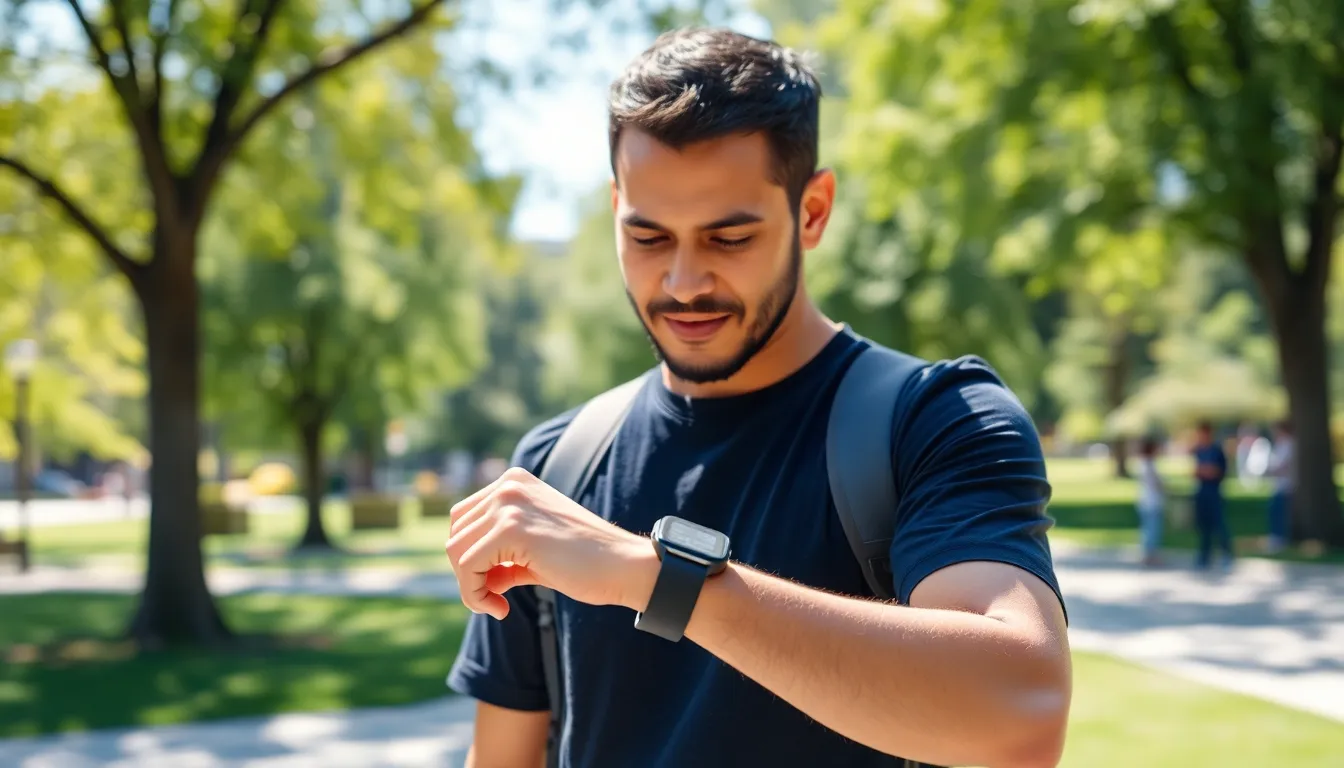Table of Contents
ToggleIn a world where staying healthy feels like a full-time job, smartwatches are stepping up as the trusty sidekicks we never knew we needed. Imagine strapping on a device that not only tells time but also keeps a watchful eye on your blood pressure, heart rate, and oxygen levels. It’s like having a mini doctor on your wrist—minus the awkward small talk.
These high-tech gadgets are more than just stylish accessories; they’re essential tools for anyone looking to take charge of their health. With real-time monitoring, they help users stay informed and motivated, making fitness goals feel a little less daunting. So why not embrace the future of wellness? Your wrist might just become the most exciting place for health insights, and who doesn’t love a little tech magic in their daily routine?
Overview of Smart Watches
Smartwatches now serve as vital health monitoring tools. These devices track essential metrics like blood pressure, heart rate, and oxygen levels. Users gain insights into their health in real time. With advanced sensors and features, these gadgets act like a mini doctor on the wrist.
Variety in smartwatches appeals to a range of users. Fitness enthusiasts often prefer models with more advanced tracking capabilities. Other individuals may seek models that prioritize comfort and style. Smartwatches cater to these varying needs through diverse functionalities.
Health monitoring features stand out among smartwatch offerings. Blood pressure monitors provide crucial insights for managing cardiovascular health. Heart rate tracking enables users to optimize workout routines. Oxygen level monitoring supports overall wellness and fitness goals.
Manufacturers continuously innovate within the smartwatch market. New models frequently incorporate cutting-edge technology and software. User-friendly interfaces make it simple to navigate health metrics. For example, some devices offer comprehensive health summaries via dedicated smartphone apps.
Smartwatches enhance the user experience through connectivity. Notifications for calls, messages, and apps keep users informed while promoting reduced screen time. Many users appreciate this integration into their daily routines. Overall, smartwatches represent significant advancements in personal health management and convenience.
Key Features of Smart Watch With Blood Pressure and Heart Rate Monitor and Oxygen

Smartwatches equipped with blood pressure, heart rate monitors, and oxygen level measurements offer comprehensive health tracking. These devices cater to a variety of health-conscious users, enhancing overall wellness management.
Blood Pressure Monitoring
Blood pressure monitoring features allow users to track their systolic and diastolic readings in real time. Smartwatches offer this functionality through advanced sensors, ensuring accuracy and convenience. Regular monitoring helps detect trends, enabling individuals to make informed health decisions. Some models alert users when readings exceed normal ranges, encouraging timely action. These insights play a crucial role in managing hypertension and overall cardiovascular health.
Heart Rate Monitoring
Heart rate monitoring provides continuous feedback on cardiovascular activity throughout the day. Devices utilize optical sensors to measure heart rate variability, fitness levels, and recovery times effectively. Some smartwatches send notifications if the heart rate exceeds or drops below preset thresholds, promoting responsive health management. Additionally, tracking heart rate during workouts offers critical data for optimizing exercise routines. This feature integrates seamlessly into fitness goals, ensuring users stay on track.
Oxygen Level Measurement
Oxygen level measurement capabilities enable users to track their blood oxygen saturation (SpO2) levels. This metric is vital for assessing respiratory health, particularly for those with existing conditions. Smartwatches incorporate infrared sensors to deliver accurate readings, alerting individuals to potential issues. Regular monitoring can indicate changes in fitness levels or pulmonary health, fostering timely medical consultations when necessary. This functionality enhances awareness and promotes proactive health behaviors.
Benefits of Using a Smart Watch With Blood Pressure and Heart Rate Monitor and Oxygen
Smartwatches providing blood pressure, heart rate, and oxygen monitoring come with numerous advantages. These devices revolutionize personal health management by making vital metrics easily accessible and comprehensible.
Health Tracking and Management
Consistent tracking of blood pressure aids individuals in detecting trends early and managing hypertension effectively. Heart rate monitoring offers real-time insights into cardiovascular activity, enabling users to adjust their workouts accordingly. Oxygen level measurements ensure users remain aware of their respiratory health, crucial for maintaining overall well-being. With alerts for abnormal readings, users receive timely notifications for potential health issues. Real-time insights motivate individuals to stay active and make informed decisions about their health.
Convenience and Accessibility
Smartwatches simplify health monitoring, eliminating the need for multiple devices. Health metrics are accessible at a glance, empowering users to track their wellness without hassle. User-friendly interfaces allow for easy navigation of numerous features, enhancing user experience. Connectivity with smartphones further streamlines the process, ensuring essential notifications remain within reach. Routine check-ups become easier, as users can share accurate readings with healthcare providers quickly. This combination of convenience and accessibility fosters a proactive approach to personal health management.
Factors to Consider When Choosing a Smart Watch
Choosing the right smartwatch involves several important factors to ensure it meets health monitoring needs.
Accuracy and Reliability
Accuracy plays a critical role in health monitoring. Smartwatches must provide precise blood pressure, heart rate, and oxygen level readings. Users should look for devices that undergo rigorous testing and validation. Data from verified sources ensures reliability, promoting informed health decisions. Consistent readings over time help track trends effectively. Brands with established reputations often deliver more trustworthy performance. Choosing a smartwatch with user reviews and clinical endorsements increases confidence in its effectiveness.
Battery Life and Compatibility
Battery life impacts how often users need to recharge their devices. Longer battery life means uninterrupted health monitoring, reducing the hassle of frequent charging. Many smartwatches provide several days of use on a single charge. Compatibility with smartphones enhances the overall user experience. Devices that sync easily with popular operating systems allow for smoother integration of apps. Check whether a smartwatch supports essential applications and features that enhance utility. Prioritizing both battery life and compatibility leads to a more satisfying experience with health tracking.
Smartwatches equipped with blood pressure, heart rate, and oxygen monitoring features are transforming the way individuals manage their health. These devices empower users to take control of their wellness by providing real-time insights into vital metrics. With a variety of options available, there’s a smartwatch to suit every lifestyle and preference.
By integrating advanced technology with user-friendly interfaces, these smartwatches not only enhance health monitoring but also promote proactive health management. As users become more aware of their health trends, they can make informed decisions that lead to better outcomes. Investing in a smartwatch can be a significant step towards achieving personal health goals and maintaining overall well-being.











